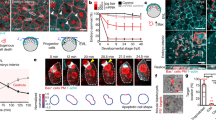Abstract
WHEN leucocytes from the blood of a fowl more than a few weeks old are placed on the chorioallantois of standard 12-day chick embryos, focal proliferative lesions are produced. These are well developed at four days and by seven days have become nodules 2–4 mm. in diameter1. Approximately 2 × 104 leucocytes produce one lesion. Owing to the occurrence of secondary foci, there may be considerable uncertainty about the count with some membranes, but when dilutions are used the distribution of counts obtained is close to a standard Poisson distribution.
This is a preview of subscription content, access via your institution
Access options
Subscribe to this journal
Receive 51 print issues and online access
$199.00 per year
only $3.90 per issue
Buy this article
- Purchase on SpringerLink
- Instant access to full article PDF
Prices may be subject to local taxes which are calculated during checkout
Similar content being viewed by others
References
Boyer, G., Nature, 185, 327 (1960).
Cock, A. G., and Simonsen, M., Immunol., 2, 103 (1958).
Simonsen, M., Acta Path. Microbiol. Scand., 40, 480 (1957).
Author information
Authors and Affiliations
Rights and permissions
About this article
Cite this article
BURNET, F., BOYER, G. Loss of Specificity on Passage of Immunologically Competent Cells in the Chick Embryo. Nature 186, 175–176 (1960). https://doi.org/10.1038/186175a0
Issue date:
DOI: https://doi.org/10.1038/186175a0



